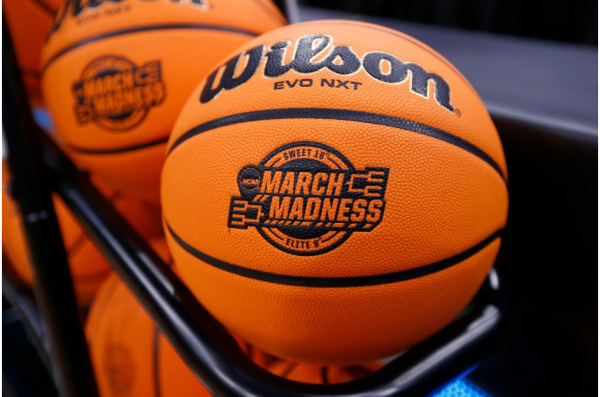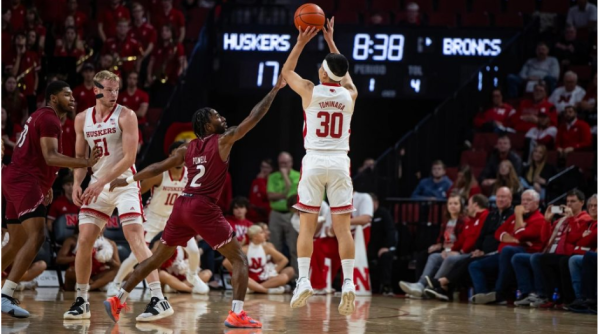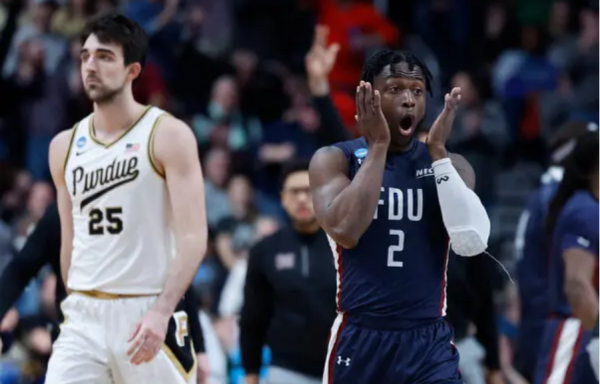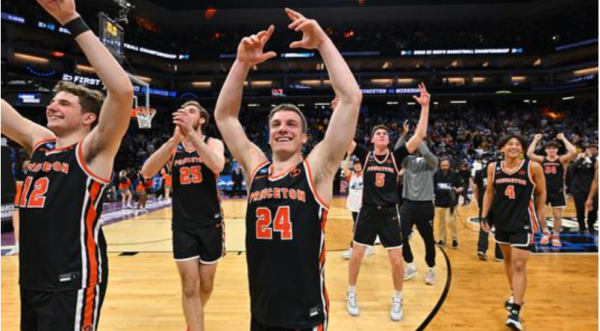 Picture from The Pioneer Women
Picture from The Pioneer Women
There are many things that make March arguably the best month of the year. Everyone knows it as Women’s History Month, the month for the Irish to get drunk with Saint Patty’s Day (or to get pinched if you don’t wear green), or the month where McDonald’s infamous Shamrock Shakes come and go. Google also states that it’s Dolphin Awareness Month, Cerebral Palsy Awareness Month, and National Celery Month!
Alright, no more kidding around, it’s the month of busting out the paper and pencil, and millions of sports fans staring soullessly at an empty 68-team bracket. March Madness consumes the sports world in the second half of March, in fact, it consumes most of the national media. For students in the country, the tournament has found itself to be a quick topic of conversation with classmates or teachers, with some teachers even giving students brackets to fill out as a “Do Now” at the beginning of class.
March Madness gets its appeal not just because it’s arguably the greatest sport in the world, but the fact that so many schools from all over the nation are represented, with 68 teams each competing for the chance to cut down the nets and hoist that trophy in the end. Plus, you can’t deny the emotional overload you get from that annual One Shining Moment video.
The best part about it is the bracket-busting. It’s March Madness law to fill out a bracket, even if you have no clue about the statistical impact of each team, their players, their points allowed average, or even where the school is from. Anyone can fill out a bracket, it’s the simplest and most exciting thing to do in sports. Except for the fact no one can ever get it completely right. Daniel Wilco of ncaa.com states the odds of simply flipping a coin to pick each matchup is “1 in 9,223,372,036,854,775,808.” You simply cannot predict it, hence the “Madness” aspect.
 Pictured above: Nebraska’s Keisei Tominaga (#30), one of the nation’s most electric three-point shooters (picture from JAPAN Forward)
Pictured above: Nebraska’s Keisei Tominaga (#30), one of the nation’s most electric three-point shooters (picture from JAPAN Forward)
Dr. Ed Feng, who runs The Power Rank and has a PhD in Chemical Engineering from Stanford, states the key to picking “upsets” comes from three-point percentage. Feng writes, “During the 2021-22 season, underdogs of six or more points that won made 5.5% more of their threes than their season average. Favorites that lost made 5.5% less from behind the arc.” Even this is impossible to do, as Feng adds that there is “no correlation in a team’s three-point percentage from early to late season. This was true for both offense and defense.” You can’t pinpoint exactly what will happen in a game.
That’s exactly the point, though. Every game will have a different result, you can not guarantee anything when it comes to college basketball in March. Take it from last year! The Final Four, the four college teams that fought through each round and have a shot of playing in the National Championship game, was made up of a 5 seed San Diego State versus 9 seed Florida Atlantic, and a 4 seed UConn versus 5 seed Miami FL. In fact, no 1 seed (Alabama, Purdue, Houston, Kansas) even made it to the Elite Eight last year. The fun started with 13-seed Furman winning on a half-court steal and quick pass to guard JP Pegues, who threw up an uncontested shot to win against 4-seed Virginia. Besides that first-round upset, most of the favorites won their matchups to advance.
Besides Purdue, in the second 16-seed over 1-seed upset ever, Fairleigh Dickinson, led by the energetic first-year coach Tobin Anderson, won in a tight matchup against Purdue 63-58. The pure emotion and “we can beat them” attitude was displayed by Anderson’s once-laughed-at claim that, “The more I watch Purdue, the more I think we can beat them. Let’s go shock the world.” Anderson led the smallest (height-wise, on average) team in the tournament to do just that against Purdue’s Naismith Player of the Year, towering 7’4” defensive unit Zach Edey.
That’s the spirit of March right there. FDU is a private college near Hackensack, New Jersey, virtually located on one street. Their players’ indomitable spirits based solely on the phrase “let’s shock the world” inspired the entire nation, and made a practically unknown Tobin Anderson the talk of the first round of the tournament. March Madness makes celebrities of those most deserving, those with the biggest heart, with the most drive to win. The ones who don’t care that they barely sneaked into the tournament as a 16-seed.
 Picture from The New York Times
Picture from The New York Times
Take for another instance, the 2018 UMBC Retrievers team that was the first 16-seed to win over a 1, blowing out Virginia 74-54. Their upset tells a different story of the drive of March: it’s simply who gets hot at the right time versus who gets cold at the wrong time. ABC 11 states, “UMBC did whatever they wanted and Virginia couldn’t buy a bucket. The Retrievers shot 54.2% from the field and 50% from three-point range, while the Cavaliers shot 41.1% from the field and just 18.2% from beyond the arc.” It doesn’t matter what seed you are assigned by the Selection Committee, when you’re in the tournament, it’s a neutral court. You feed off whatever noise you get while there, and you best believe the crowd is praying for the upset. It doesn’t matter the narrative around your team, it’s pure basketball. And it’s the absolute best.
Ohio State’s Health and Discovery program created an article in March 2022 pinpointing the phenomenon of rooting for upsets, and why they make the typical sports fan feel good (unless it’s your team being beat). Sports Psychology assistant professor Chelsi Day brings the joy of upsets to the fan’s relation to the fabled underdog, mixed with “schadenfreude.” Day compares this to tales of the Bible, claiming, “Schadenfreude is the feeling of pleasure we get from the misfortune of others. That usually happens when the “others” are viewed in a negative way. If they lose, it feels karmic in nature. That can especially happen with teams that have a long trail of wins or a storied history. They become the villain, and we like to see the little guy take down that Goliath.” She also brings up the popular term, “Cinderella story”, which is when a team of little notability or fame unexpectedly achieves success.
 Picture from Princeton University
Picture from Princeton University
A “Cinderella story” from 2023 would have been the 15-seed Princeton Tigers. Yes, Princeton. One of the ten hardest schools to be accepted to, a “nerd school”. Yet, they would upset 2-seed Arizona 59-55, then handle 7-seed Missouri 78-63 before falling to offensive powerhouse 6-seed Creighton. Princeton would gather their wits to make it to their first Sweet 16 since 1967. The craziest part? The Ivy League is typically laughed at, come March. But Princeton’s guard Blake Peters said it best, as he channeled his inner Kevin Garnett, “Anything is possible!”
The answer is simply that there is no answer. There is no way to make March Madness make sense. It’s beautiful, though. For once, sports don’t need to make sense. As stats prove, well, they don’t prove anything! It’s almost refreshing to be able to venture into the unknown and watch kids from all over the nation live out their dreams in one of the most popular sporting events of the year.
